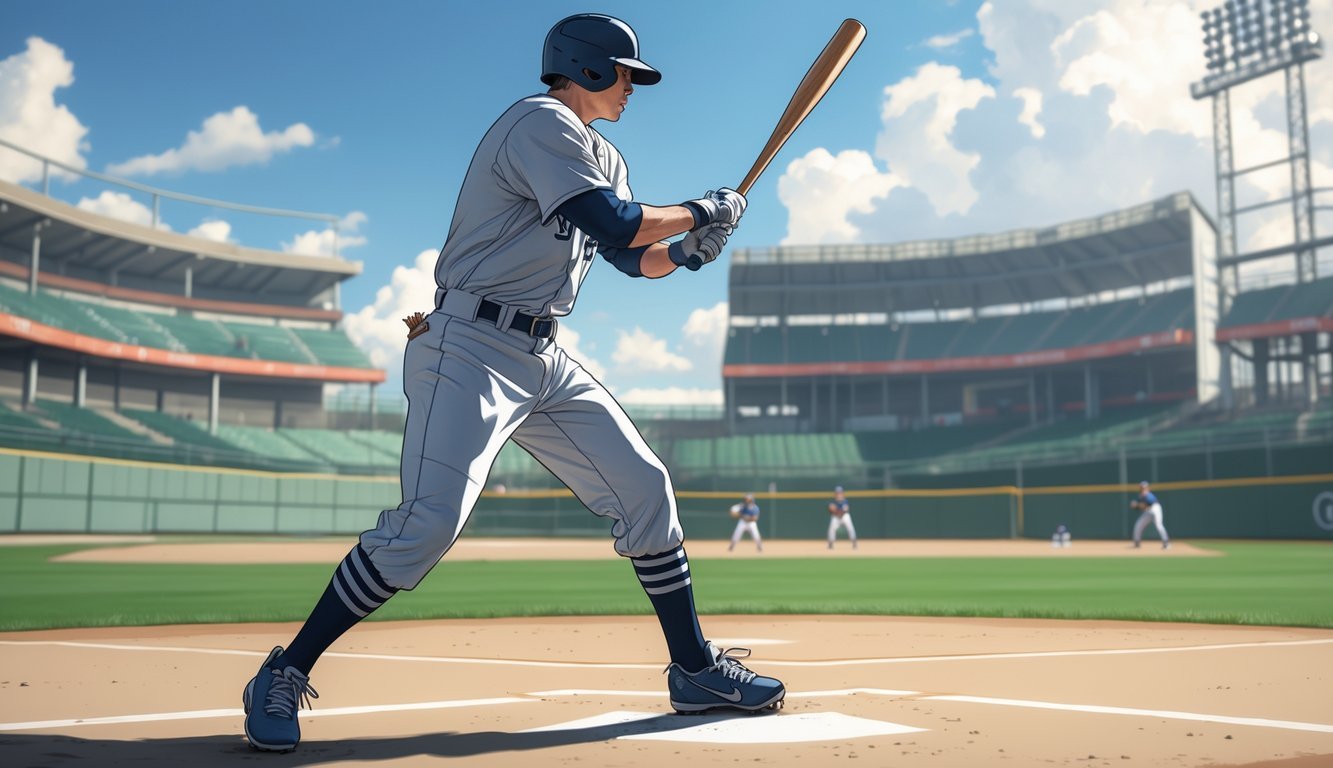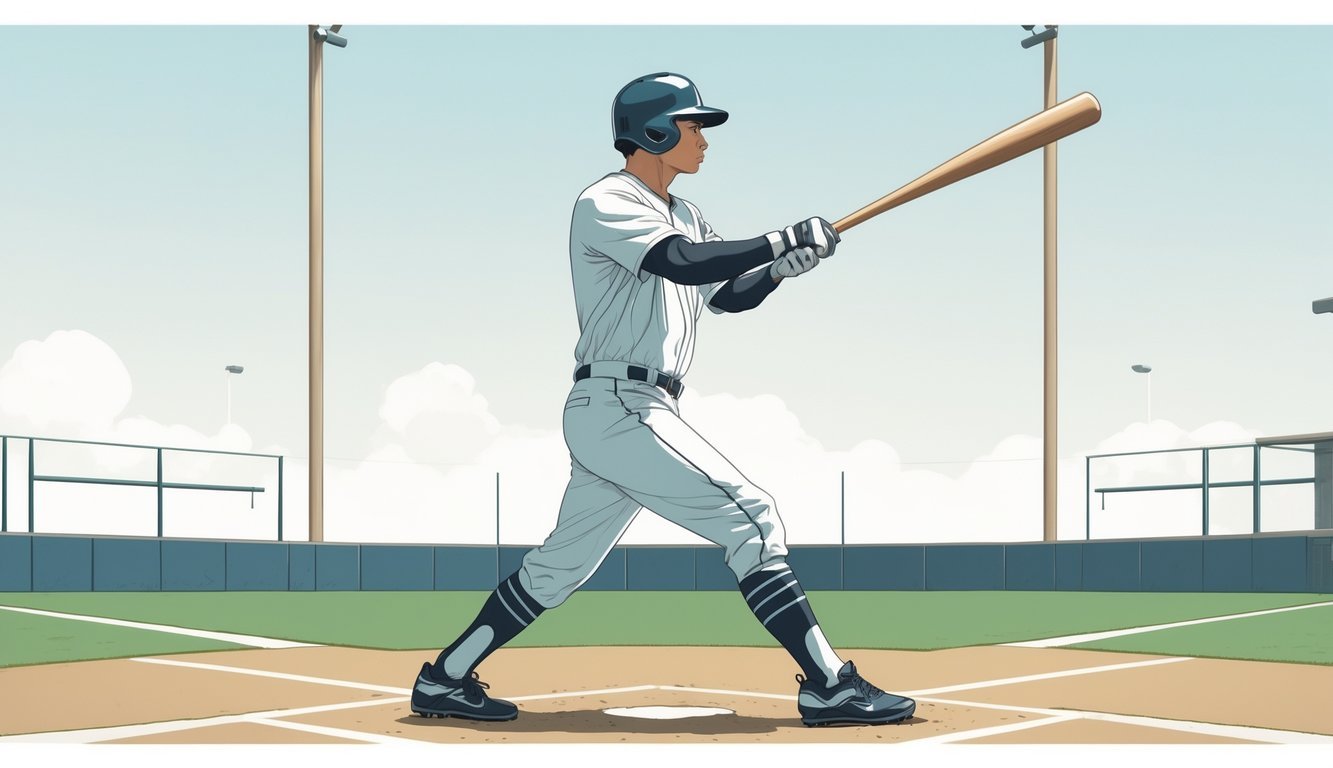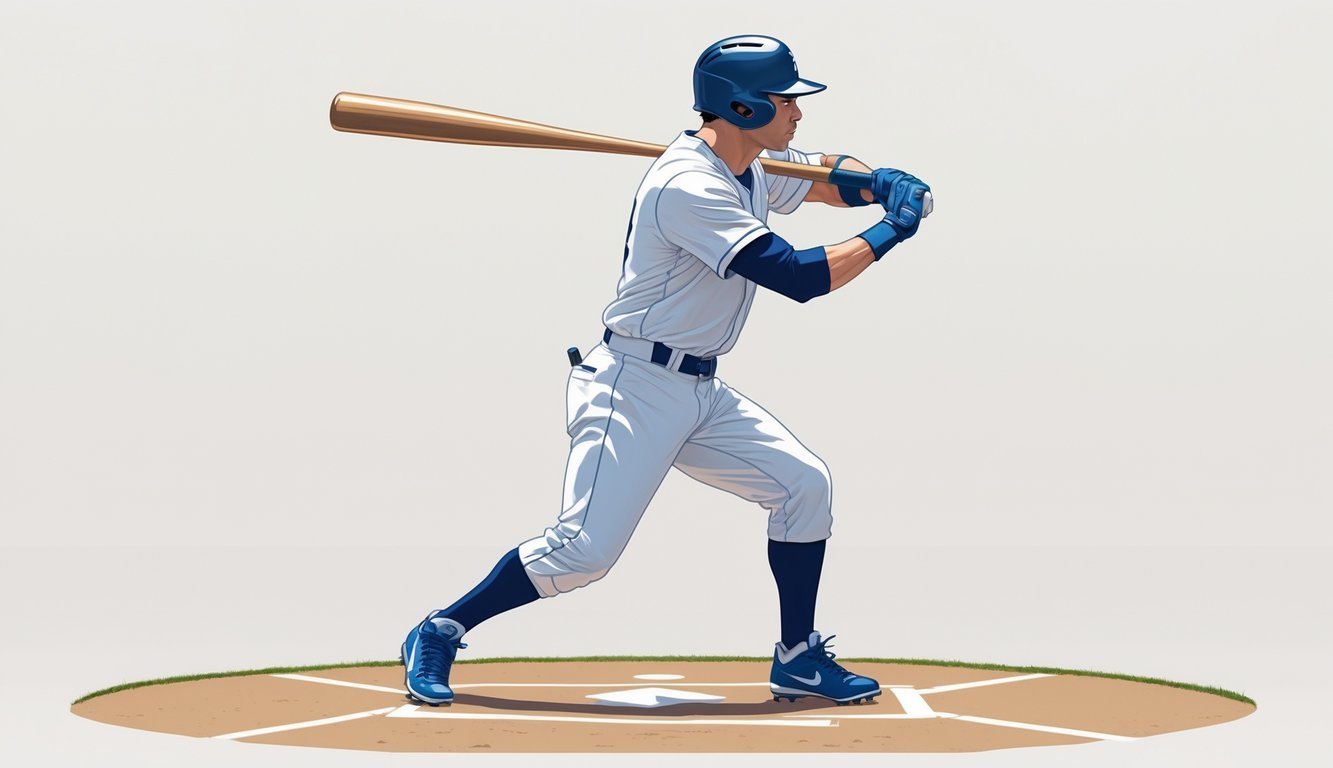PsychNewsDaily Publishers
100 Summit Drive
Burlington, MA, 01803
Telephone: (320) 349-2484
PsychNewsDaily Publishers
100 Summit Drive
Burlington, MA, 01803
Telephone: (320) 349-2484
Your batting stance significantly affects balance, swing power, and overall hitting performance, with variations like square, open, and closed stances offering distinct advantages.

Your batting stance might be one of the most important parts of the baseball game. It sets the foundation for every swing you take and honestly, it can make or break your chances at the plate.
With the right batting stance, you’ll stay balanced, react faster, and hit the ball more solidly.

You can try different types of stances—open, closed, or square. Go with what feels natural and gets you the results you want.
Each stance has its perks, like giving you a better look at the pitcher or adding some extra pop to your swing.
Finding your ideal stance can make hitting more fun and boost your confidence.
Whether you’re just getting started or you’ve played for years, knowing how to stand in the batter’s box really helps you enjoy the game and see better results when you step up to bat.

A good batting stance starts with your feet, your posture, your grip, and where you’re looking. These pieces all work together to keep you balanced, comfortable, and ready to react.
Start with your feet about shoulder-width apart. That gives you a solid, steady base.
Put your back foot just behind the back edge of home plate. Your front foot lines up near the front edge.
Keep your toes mostly forward or a bit turned in. This helps you stay balanced.
Bend your knees just enough to feel loose and ready. You don’t want to feel stiff.
Balance is everything. Spread your weight evenly between both feet.
This way, you can shift your weight forward when you swing and still stay in control.
Face the pitcher with your chest, shoulders, and hips, but don’t lock up. Stay relaxed and natural.
Bend a little at the waist to keep your posture athletic.
Keep your knees bent to absorb movement and stay ready. If you stand too straight or slump, your swing gets awkward.
Good alignment lets you move quickly and smoothly. Level shoulders, squared to the plate, help you stay connected to the ball and hit with more power.
Hold the bat with your fingers, not your palms. You’ll get better control that way.
Line up your knuckles, almost like you’re holding a can.
Rest your hands near your back shoulder. Keep your back elbow up but loose.
This spot helps you whip the bat through the zone fast.
Keep your hands at a height that feels right—usually around your chin. That makes your swing smoother and less forced.
Keep your head up and eyes locked on the pitcher. Your vision is huge here.
Try to keep your head still so you track the ball better.
If your head moves forward or back, you’ll lose focus and mess up your timing.
Concentrate on the ball. A steady head helps your posture and makes your swing more natural.

Your stance changes how you see the ball, make contact, and create power. Picking the right one depends on what feels right, your build, and how you want to attack different pitches.
Each stance tweaks your feet, shoulders, and weight for its own benefits.
In a square stance, you point both feet straight at the plate. Your shoulders and hips open up to the pitcher.
You keep your weight balanced between both legs. That helps you stay steady.
This stance gives you a clear look at the strike zone. Judging pitches gets easier.
It’s a great starting point for beginners because it helps you make consistent contact.
You keep your hands just above your back shoulder and your elbows relaxed.
The square stance offers a nice balance of power and control. It makes it easier to load up and shift your weight for more power.
But, you might notice it’s a bit slower to react to outside pitches.
An open stance means you pull your front foot away from the plate. Your hips open more toward the pitcher.
This move helps you see the ball better, especially on outside pitches. Your shoulders and weight lean back a little.
A lot of hitters like this stance for better vision and timing. You get to wait just a bit longer before you swing, which can help with fastballs.
Keep your arms relaxed and load your weight onto your back leg.
The open stance can add power by letting you shift your weight forward faster. But it might make it tougher to reach inside pitches.
You can play with your foot angle or how open your shoulders are to tweak this stance.
In a closed stance, you step your front foot closer to the plate. Your hips turn away from the pitcher.
This helps you protect against inside pitches since your body moves away from the ball’s path.
A closed stance encourages quicker swings for inside pitches and can give you strong contact.
You lean a bit more weight on your front leg, which helps when you’re trying to pull the ball with power.
The downside? You might struggle to see and hit outside pitches.
Hold your hands close to your body and keep your shoulders lined up to control your swing.
Some hitters change their stance for certain pitchers, pitch types, or game situations.
You might lower your stance for better balance or shift your weight back for timing.
A lower stance helps you track pitches and make quick contact. A wider stance adds stability and can give you more power.
Maybe you raise your front elbow to help with bat speed. Sometimes, you move your feet closer or farther from the plate to cover more of the strike zone.
These small tweaks help you handle different pitches and give you a better shot at a solid hit.

Your stance shapes your balance, timing, and power. Even small changes in your feet, hands, or body can totally change your swing.
Start with your feet shoulder-width apart and knees slightly bent. Focus on feeling balanced and loose.
Hold the bat so your hands sit at a comfortable height—not too high, not too low. Eyes on the pitcher.
Try the “dry swing” drill. You swing without a ball to get used to your stance and motion.
Stand in front of a mirror and check your stance. Make sure you look balanced and comfortable.
Definitely. Baseball stances focus on quick, powerful swings. Cricket stances tend to be more upright with wider legs.
Bat angles and grip also change because the games move at different speeds and have unique rules.
Most people bat from the side opposite their dominant hand. Right-handed folks usually bat right, left-handed folks bat left.
Switch-hitters go from both sides. They pick based on the pitcher or whatever feels best that day.
MLB players usually stand in a way that fits their hitting style. You’ll see good balance, strong footing, and hands up by the shoulder.
They keep their eyes level and focus on timing. Lots of pros make small tweaks for more power or control.
Coaches usually tell players to stay relaxed. Nobody hits well when they’re tense or stiff.
They also push for simple, repeatable positions. Overcomplicating it just makes things harder.
Most coaches want you to find balance first. Once you’ve got that down, you can start working on timing and power as you get better.